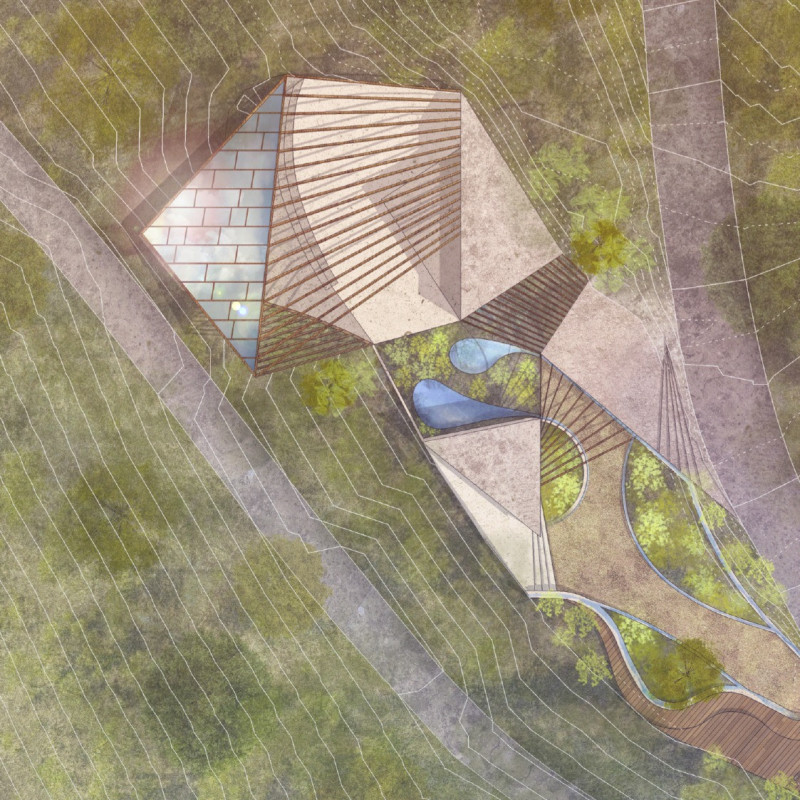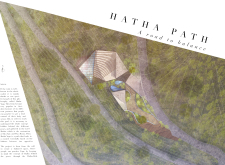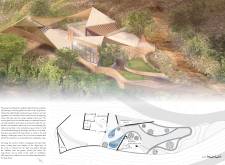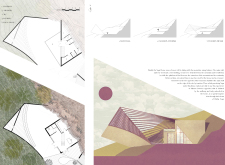5 key facts about this project
The Hatha Path consists of various interconnected structures that include a main yoga space, meditation areas, and pathways that traverse the surrounding landscape. Each component is crafted to enhance the user experience, encouraging both individual reflection and communal engagement. The architectural elements harmoniously work together to support the core functions of the project, fostering a sense of peace and connection to nature.
Spatial Organization and Materiality
A key characteristic of Hatha Path is its innovative spatial organization. The main yoga area is designed with multi-faceted roofs that create a dynamic interior environment while allowing natural light to penetrate from multiple angles. This enhances the experience of movement and stillness intrinsic to yoga practice. The use of rammed earth for walls contributes to thermal mass, regulating temperature effectively, while wooden and metal roofing materials provide structural integrity and aesthetic warmth.
Pathways weave through the landscape, crafted to encourage exploration and movement. The materials used in the paving consist of local stone, promoting sustainability and minimizing environmental impact. Water features along these pathways not only enhance visual appeal but also create a calming ambiance, reinforcing the project's connection to the surrounding ecological context.
Unique Design Features
Hatha Path distinguishes itself through its integration of architectural elements with the natural environment. The project’s layout considers solar orientation, with key spaces aligned to capture natural light during different seasons. Such considerations serve both aesthetic and functional purposes, enhancing the spiritual quality of the yoga experience.
The thoughtful incorporation of communal spaces, including a kitchenette and gathering areas, encourages interaction among users. This design approach supports a community-oriented atmosphere that fosters social connections, which is critical to the mission of the project. Additionally, the use of nature-inspired motifs in the architecture provides a cohesive visual identity, setting it apart from conventional wellness architecture.
Sustainable Practices and Community Engagement
Sustainability is a cornerstone of the Hatha Path project. The selection of environmentally friendly materials and energy-efficient design principles highlights a commitment to reducing the ecological footprint. The rammed earth walls not only ensure durability but also promote natural insulation, effectively reducing reliance on mechanical heating and cooling.
Community engagement is another pivotal aspect of the design. The layout encourages participants to explore and immerse themselves in the natural surroundings, fostering a deeper connection to the environment. This experience is enhanced through intentional pathways and communal spaces that invite collaboration.
For a more comprehensive understanding of Hatha Path, including architectural plans, sections, designs, and ideas, readers are encouraged to explore the project presentation. This will provide deeper insights into the principles and technical details that define this unique architectural endeavor.


























